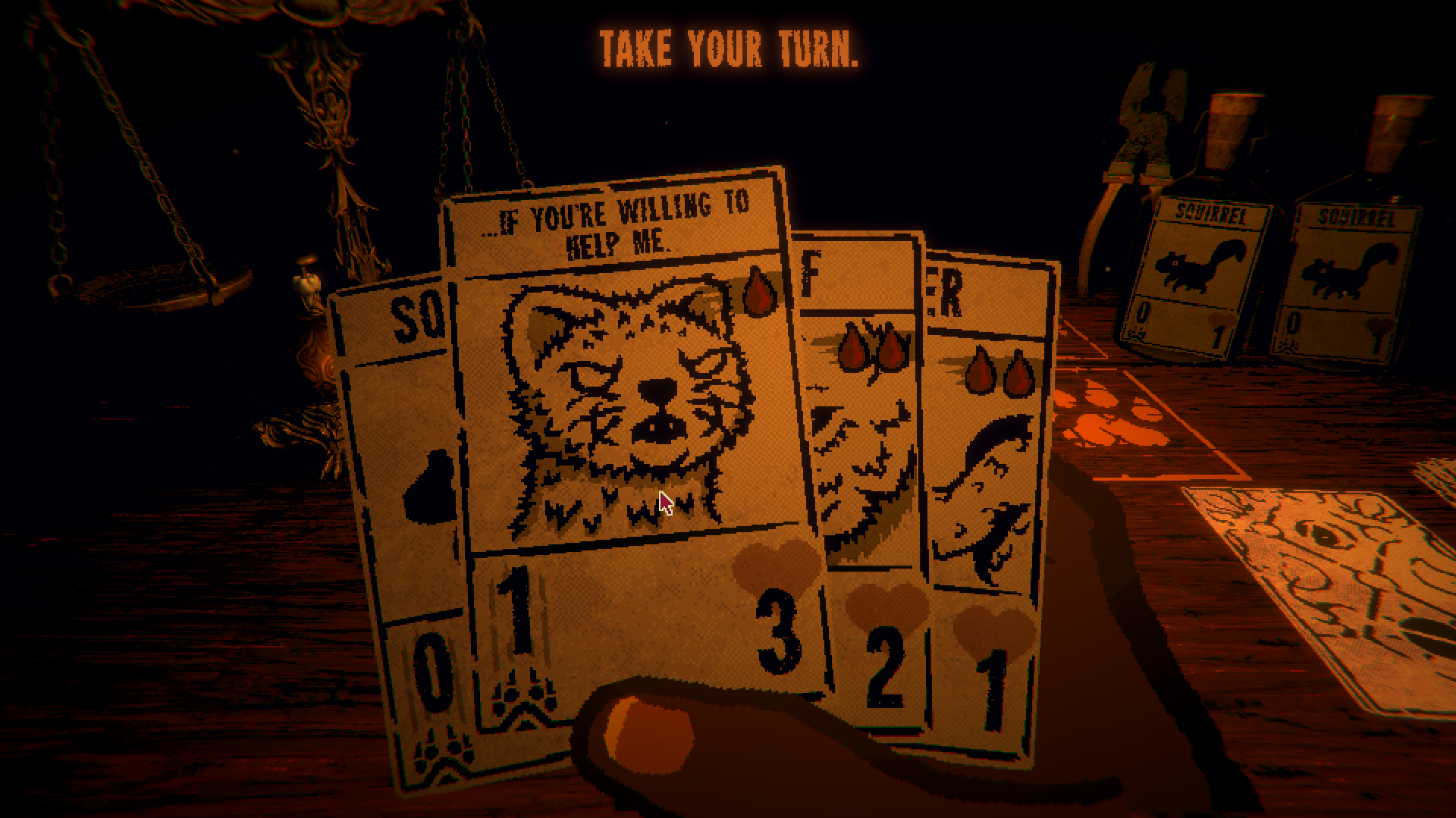Secrets in the Files: Epistolary Stories in Video Games
There’s a long literary tradition of telling stories through letters; here’s how it works in games

I’d like to start this article with a brief warning. I’m going to talk about the plot of Inscryption. I’m also going to talk about the plot of Inscryption.
There. You’ve been warned.

Inscryption is a deck-building game about four powerful entities — known as Scribes — who are secretly struggling for supremacy while dark forces build beneath their world. Meanwhile, Inscryption is the story of Luke Carter, a trading card enthusiast with a YouTube channel who stumbles upon a strange conspiracy relating to one of the card companies he talks about.
This isn’t a riddle but an accurate — if somewhat confusing — description of the story. There are actually two games here: Inscryption, the game that a human being (you, perhaps) has purchased and is playing, and Inscryption, the perhaps-haunted game at the center of Inscryption. Therefore, when you play Inscryption, you are really playing Inscryption as filtered through Inscryption.
Hold on, I can clear this up.

Inscryption is a nested story with an inside and an outside (or framing) story. The inside story is the story of the Scribes and is the one the player encounters first — drawn into it in medias res. The outside story is hinted at from the start (Carter’s voice can be heard upon booting the game for the first time), but isn’t revealed until several hours in when Carter’s camcorder has a technical problem. When the camera reboots — surprise! — the player is presented with the camera’s menu, from which they can peruse a selection of video clips relating to that outside story.
By itself, the outside story isn’t much to write home about — a fairly standard Creepypasta of the haunted/cursed video game type. What’s more interesting is how it interacts with the inside story. The big reveal at the end of the first act changes the narrative in a fundamental way. As it turns out, you are not a person playing a game you bought on Steam; you are instead an observer watching Luke Carter play a lost game that he found in a box buried in a forest. Lose yourself in the frame story, and you’ll even find yourself role-playing Carter playing this game.
This doesn’t change the central story. What it does, however, is change the way the player views the story. And this is the promise and peril of epistolary fiction.

“Epistle” is just a fifty-cent word for a letter, which means that epistolary fiction is literally a story told through letters. The form dates back hundreds of years, making it nearly as old as the Western novel. Since then, the definition has been expanded, and an epistolary novel is now defined as a narrative told through any documents — diary entries, news articles, blog posts, chat logs, or anything else you can imagine.
I love epistolary fiction, not just reading it but writing it, and it pains me that so many people view it as a mere gimmick. The form allows the writer to play tricks on the reader, to create a sense of either voyeurism or intimacy, and to otherwise change the way the reader interacts with the work. When reading epistolary fiction, one becomes a participant, finding the story hidden between the letters.
Can the epistolary form be applied to other media? Arguably, it can. Found footage films are an obvious example, though this is usually a mere framing device that doesn’t really change the way the viewer engages with the story. A mockumentary might come closer, especially if it is well-done — the story is told between the scenes, with the viewers called upon to suss out the truth for themselves.
There is no reason that you couldn’t have an epistolary video game, and I’d argue that it is a much better medium for it than film. Many epistolary novels put the reader into the role of investigator, and a video game takes that to the next level by adding interactivity. It is, on paper, a logical extension, but there is a catch: It is hard to work epistolary elements into a game with conventional gameplay mechanics — it gradually turns into something more like interactive fiction or an ARG.

Inscryption tries to square this circle by using two “layers”: an inside layer (the gameplay) and an outside layer (the epistolary elements) and threading between them as necessary. This is hardly the first time anyone has attempted this, though. While not every game leans as much into the postmodern, there have been plenty of attempts to make epistolary fiction work in games.
When thinking about epistolary storytelling in video games, it’s perhaps best to look at it as a spectrum. On one end of the spectrum, we have games with conventional narratives which include a handful of epistolary elements. I’m talking, of course, about a mainstay of a certain breed of game: Files.
It really feels like files have been in video games forever, and people have been making fun of them for about as long. They are a staple of horror games in particular — not surprising, given that the style has existed in horror fiction since at least Dracula. Before the audio files in the Bioshock games, there were letters and documents in Resident Evil, Silent Hill, and System Shock; before that, they could be found in Alone in the Dark and Sweet Home. It’s a staple of the genre now — part of the survival horror experience is toting a filing cabinet to keep track of all of the letters and confidential documents you’ll accumulate.
Files have stuck around for so long for a reason: They are an effective tool for relaying certain types of information. An old letter can relay information about the past that spares the player a clumsy flashback or expository text dump. Letters can also give texture to the world by hinting at things not revealed through the narrative proper. Put simply, they are a way to sneak in story elements that would otherwise be hard to include — and by having the player find them, they also grant a sense of involvement in the story.
So where does the mockery come from? There are various explanations, I think. There is the excessive number of files in some games; the overreliance on certain tropes (e.g. the spooky diary of a man slowly going mad); the low quality of the writing in many of them. But a big part might be that developers rely too heavily on them, neglecting the main story in favor of dribbling out little bits of hopefully interesting information.
But what if a developer committed fully to using files as the basis of a game?

At the other end of the spectrum are games which are, first and foremost, about story — games that turn epistolary devices into the core gameplay. As the indie market has grown, we’ve seen more and more titles like this, pushing storytelling in new directions.
I’m a particular fan of Osmotic’s Orwell games, and these are a fine example of the concept in action. Each game places the player in the role of a cog in the security apparatus of a totalitarian state, tasked with rooting out terrorists and other threats to the prevailing order. To this end, the player is given the right to sniff through personal documents of targeted individuals with the goal of connecting them to crimes. Along the way, a player with a keen eye might pick on hints of additional relationships between the targets — some of which are relevant to the investigation, some of which are simply texture.
Then there are the narrative-driven games of Sam Barlow: Her Story, and the follow-up Telling Lies. Again placing the player in the role of an investigator, this time the goal is to learn the truth behind a crime by analyzing snippets of interviews with people of interest. The clips are intentionally out of context, forcing the player to make leaps of faith in drawing connections. And in a further po-mo touch, the game is contained within a fake computing environment, complete with Easter eggs and games hidden in the virtual machine’s files.
Games like this are very interesting, but they do stretch the definition of what one might call a “game.” Orwell and Her Story are better described as — respectively — a visual novel and an interactive movie. They feature little in the way of conventional gameplay and are generally more experimental in form.
So what kind of game might exist in the hazy area between these two poles?

I’ve been thinking about it, and I believe I have a concept for an epistolary game that doesn’t skip out on the “game” part.
It’s a mystery narrative, a detective story — an obvious fit since so many epistolary stories are investigations. The character has taken on the role of a PI (never named — the better to serve as a blank slate for the player) in some suitably old-school yarn — a routine job that turns into a murder, a disappearing client, a conspiracy, a false accusation against the protagonist. The goal is simple: Figure out what’s going on.
The game is divided into two parts. The first part is fieldwork, with the player heading out into the game world in search of clues. The world is largely open and the player can approach this part in different ways, though stealth is preferred to the direct approach. The player may have to break into offices, interrogate persons of interest, tail suspects, take pictures, even place wiretaps — all while maintaining a suitably low profile.
The second part — analysis — kicks in when the player returns to their office. Here, in relative safety, the player pores over the various pieces of information found in the field. The interface allows the player to draw inferences between different pieces of information and, if those connections are valid, the game lets the player know. Gradually, the player narrows down a list of suspects until there is enough evidence to finally close the case once and for all.
I see this as a game with the design sensibilities of L.A. Noire, but with mechanics inspired by Thief, Orwell, and a bit of Papers, Please.
Will I live to see a game like this? Hey, a boy can dream.
